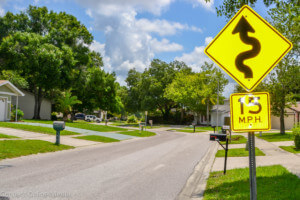Speeding or Not? How can we tell?
 Cars speeding through neighborhoods is, perhaps, the most common issue that residents bring to city officials and law enforcement. It is a natural concern. Speeding in residential areas endangers both lives and property. The first thing officials must do is verify the claim. Are cars really speeding in the area? Is it widespread? And, how fast are they going?
Cars speeding through neighborhoods is, perhaps, the most common issue that residents bring to city officials and law enforcement. It is a natural concern. Speeding in residential areas endangers both lives and property. The first thing officials must do is verify the claim. Are cars really speeding in the area? Is it widespread? And, how fast are they going?
A traffic study reveals the truth and the answers are sometimes surprising. In June, residents of Oldsmar, Florida asked the city to install speed humps on Peppertree Drive to address their speeding problem. In response, the city conducted a traffic study. Many were surprised to learn that the results did not support the perception that there is widespread speeding. Police patrol data also supported the study results.
This is not unusual. It is difficult for a pedestrian to judge the speed of moving cars. At Radarsign, we hear this frequently from our law enforcement customers. Police departments often use the their Radarsign driver feedback signs to gather data about residential speeding. They can install the sign on a speed limit pole with the flashing feedback feature turned off, leaving the data collection software turned on. We refer to this as “stealth mode” as drivers are unaware that the sign is actually functioning, collecting valuable traffic data.
Officials tell us that many times this data reveals that the speeding problem is not as extensive as residents think. Still, when police activate the flashing feedback feature, the data inevitably shows drivers react to the signs and slow down. With a Radarsign driver feedback sign, customers get the benefit of two products in one: a data collector and a traffic-calming device.
Charlie Robeson: Radarsign™ Co-founder & Director of Sales and Marketing
